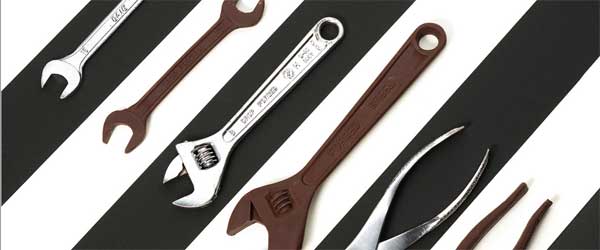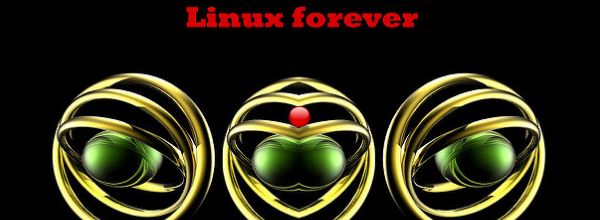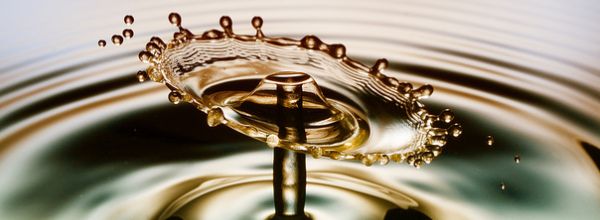The budding yeast Saccharomyces cerevisiae can do it all. It can bake your cakes, brew your beers, and tell you how your cellular machinery works. Quite the range, right?
Budding yeast is a great model organism. It shares many homologous proteins with humans, providing a powerful platform for studying protein functions.
But extracting proteins comes with the challenge of breaking open the thick cell wall yeasts have. Depending on the downstream application and the abundance of your protein of interest, there are different methods and extraction buffers to choose from.
For instance, if you aim to perform immunoprecipitations, you will likely use a milder buffer that maintains the protein physiology. If you want to run an SDS-PAGE and western blot, you will need harsher buffers that denature the proteins. Understanding the functions of each buffer component will help you optimize your extraction protocol and maximize protein yield. Here is a quick overview of the four most common yeast protein extraction methods with in-house reagents.
1. Urea-SDS Extraction
As you guessed, the key ingredients of this extraction buffer are urea and SDS. Traditionally this is the most common extraction protocol, specifically if your target is to run an SDS-PAGE. It has the same composition as SDS-PAGE sample buffer, and you can directly load the extracted samples; all you have to do is add a pinch of Bromophenol Blue (0.4mg/mL), so you can track your samples on the gel.
The Ingredients and What They Do
- Urea is a chaotropic agent that destabilizes the native protein structure by disrupting the hydrogen and hydrophobic bonds within and between proteins. A high concentration of urea (~8M) destroys the secondary structure of the proteins, bringing the otherwise insoluble proteins into solution.
- Anionic detergent Sodium Dodecyl Sulfate (SDS) is added at high concentration (~5%) to disrupt the hydrophobic bonds.
- Reducing agents like 2-mercaptoethanol (βME) or dithiothreitol (DTT) are added to break the disulfide bonds.
- Chelating agent ethylenediaminetetraacetic acid (EDTA) chelates divalent cations from the cell wall, making it more susceptible to disruption.
- Tris-HCL at pH 6.8–8.1. I say a range because it will depend on your protein solubility. Some proteins are more soluble in a lower pH, while others prefer a higher one. If protein concentration is something you struggle with, you can try optimizing the pH of your SDS buffer.
The Protocol
The cells are suspended in the extraction buffer and physically sheared by vortexing with acid-washed glass beads of appropriate size (0.4–0.5mm). The whole-cell lysate is separated from the cellular debris and boiled at 95°C for 5 minutes. Boiling the sample is crucial to ensure that the proteases released during cell lysis are completely denatured. These proteases will degrade your proteins of interest if not denatured.
Considerations
Something to consider during this extraction protocol is that although an excellent denaturing agent, urea can cause carbamylation of proteins during more prolonged heat exposure. Carbamylation is a post-transcriptional modification on free functional groups of proteins caused by a non-enzymatic binding of isocyanic acid derived from urea. Carbamylation can alter the protein structures by changing the charge of amino acids, which can potentially disrupt the antibody-targeted epitope or affect protein binding on membranes like nitrocellulose or PVDF. But fear not; you have options.
2. Trichloroacetic Acid Extraction
This protocol calls for a change in pH to gradually precipitate and then resuspend proteins in solution. Most proteins precipitate out of solution at a low pH and solubilize at a high pH. The trichloroacetic acid (TCA) buffer is an excellent reagent to isolate and precipitate proteins from whole-cell extracts.
The Ingredients and What They Do
- 10% TCA. TCA has a pH of ~1.2. It disrupts the hydrogen bonds surrounding proteins in solution, rendering them insoluble and easy to pellet out of soluble contaminants. The low pH of TCA also inactivates protease activity and minimizes protein degradation.
- 25mM acetone. Proteins are insoluble in acetone and quickly precipitate out of the solvent at low temperatures, while different buffer contaminants remain soluble.
- 1mM EDTA, you already know why.
- Tris-HCL at pH 8.
The Protocol
The cells are mechanically sheared in TCA buffer by bead-beating at a cold temperature. Centrifugation of the whole cell extract at high speed (≥10,000g) and low temperature (4°C) pellet the cell debris and precipitate proteins.
The proteins are resolubilized by boiling the sample in a resuspension buffer containing 3% SDS in tris-HCL pH 11. The high pH puts the proteins back in solution, while the SDS and boiling help with denaturation. A quick, high-speed centrifugation step separates the cell debris from the protein.
Considerations
This protocol is particularly appropriate if you are struggling with impurities in the sample and would like to work with clean and concentrated protein. You must know where your protein is during the protocol and be careful while handling the buffer, as it can be corrosive.
If you want to run an SDS-PAGE after this, add 2x sample buffer to an equal volume of your protein extract, and you are good to load the gel. Still not the right extraction method? Keep reading.
3. Alkaline Extraction
While lysing cells with glass beads is very reliable, it can be laborious and time-consuming. If you have too many samples to process and run on a gel, and if low yield will not interfere with your downstream applications, alkaline lysis is the quickest way to extract proteins.
The Ingredients and What They Do
All you need is 0.2M NaOH. Yeast cell wall is mainly composed of polysaccharides like α and β-D-glucans, which are soluble under high alkaline conditions of NaOH. Treating cells with NaOH will not disrupt the cell wall but will make them fragile and permeable.
The Protocol
You will incubate your cells with an equal volume of NaOH at room temperature for 5 minutes. After 5 minutes, pellet the cells and get rid of the NaOH. Add SDS-PAGE sample buffer and incubate in boiling water for 3 minutes. The SDS will break open the permeabilized cells and solubilize proteins, NaOH will denature proteases and protect the proteins from degradation, and your sample will be ready to load after a quick centrifugation pellets the cell debris.
Considerations
Although you will not achieve 100% cell lysis (meaning you will have a higher percentage of unbroken or partially broken cells compared to mechanical lysis), you will get away with enough protein to detect in a western blot. Please note that the parameters of this protocol are optimized for baker’s yeast; if you are working with an organism with a tougher cell wall, you may need to increase the concentration of NaOH and incubation time.
Still not convinced? I have one last option for you.
4. Zymolyase Extraction
If you have looked into buying a kit for protein extraction, you have probably come across Zymolyase. Many commercial yeast protein extraction kits use Zymolyase in their buffers. You can bypass buying the whole kit if you already have Zymolyase in your stock.
The Ingredients and What They Do
Zymolyase is a lytic enzyme that breaks down the yeast cell wall and produces a spheroplast, which is much easier to break open. Produced and purified from Arthrobacter luteus, this enzyme effectively digests the linear polymers of yeast cell walls.
Protocol
Add the manufacturer-recommended amount of Zymolyase to your yeast cells and incubate at 37° C for the manufacturer-recommended time, usually 30–60 minutes. Once the cell wall has been digested, you centrifuge, collect the spheroplast, and discard the enzyme in the supernatant. Spheroplast lysis is achieved by adding 5% SDS to the samples, which easily takes apart the weak spheroplast and releases cell content.
Considerations
Zymolyase works best on viable cells, so try to catch your cells at early to mid-log phase.
What if I Don’t Want to Denature the Proteins?
Yes, let’s talk about that. If you want to work with native proteins, your biggest concern is maintaining the protein structure while preventing it from being degraded by cellular proteases. Here are the tweaks you need to perform:
- Get rid of all the protein-denaturing reagents from your extraction buffer. No TCA, no NaOH, no urea, rely on good old-fashioned mechanical lysis by bead-beating.
- Swap the high concentration of SDS for a very, I mean a VERY low one; 0.05% instead of the usual 5%.
- Lower the EDTA concentration of your buffer to 0.1mM.
- Add protease inhibitors. Since you cannot afford to denature proteins, you must have a ton of protease inhibitors to save your proteins from the beasts. Common lab reagents like phenylmethylsulphonyl fluoride (PMSF, serine protease inhibitor), sodium fluoride (NaF, serine/phosphatase inhibitor), and Sodium orthovanadate (Na3VO4, phosphotyrosyl phosphatase inhibitor) will give you some protection. However, I strongly recommend getting a commercial protease inhibitor cocktail specific to your organism.
- Keep your samples COLD; winter-in-Canada cold.
Common Yeast Protein Extraction Methods Summarized
To help you get an easy overview of the pros and cons of these different methods, we’ve summarized the key points in Table 1.
Table 1. Pros and cons of yeast protein extraction methods.
Extraction method | Pros | Cons |
Urea-SDS extraction |
|
|
Trichloroacetic acid extraction |
|
|
Alkaline extraction |
|
|
Zymolyase |
|
|
All these protocols use inexpensive reagents and standard lab equipment. Now that you know which reagent does what, you can optimize or even mix and match your extraction protocols depending on the experiment. Maybe you will do an alkaline lysis but then precipitate the proteins with TCA. Maybe you will mechanically shear the cells with glass beads and treat them with Zymolyase to increase efficiency. Or maybe your lab has a very expensive cell homogenizer to extract high-quality protein quickly, and everything I am saying is moot to you. Who knows? The possibilities are endless.







